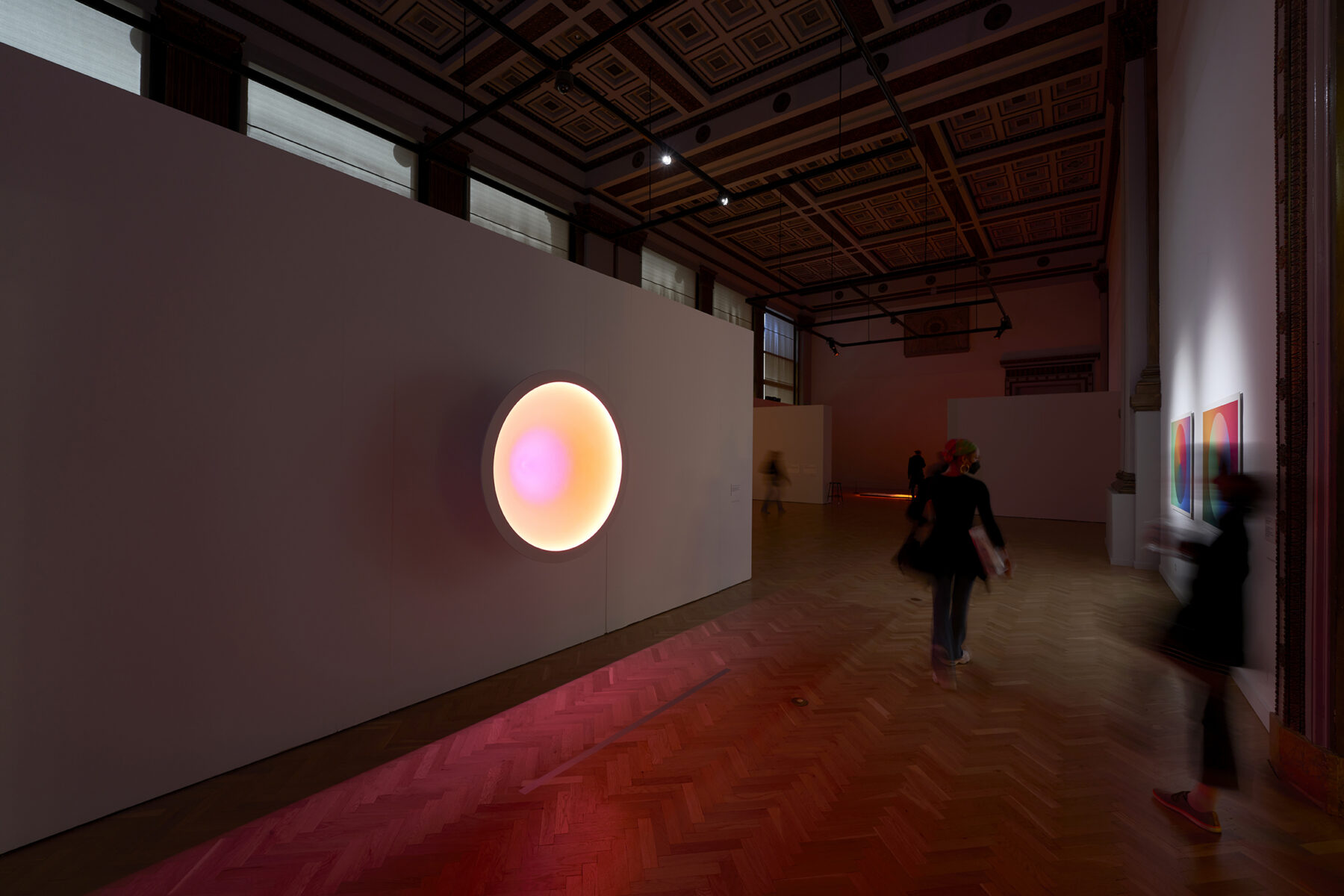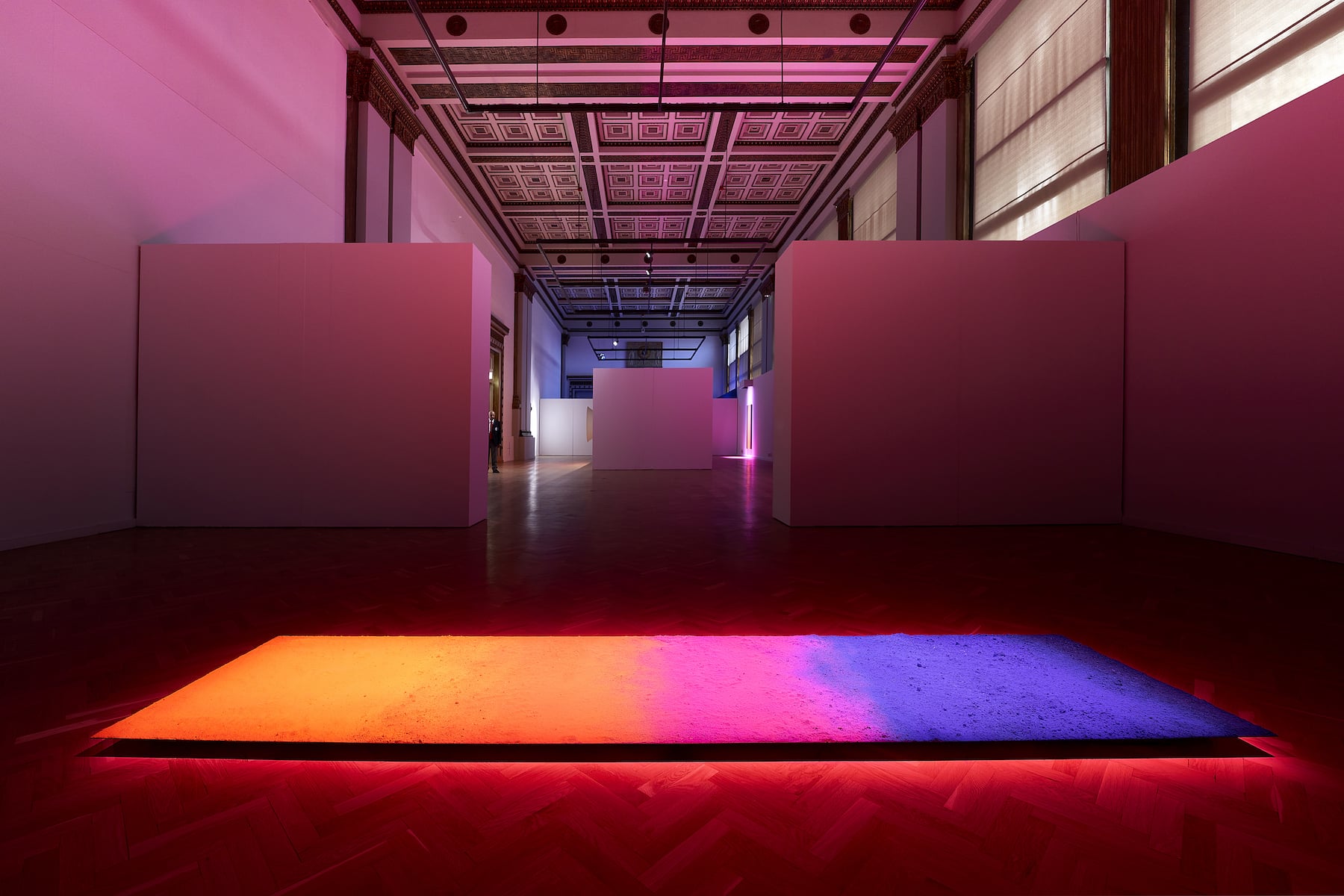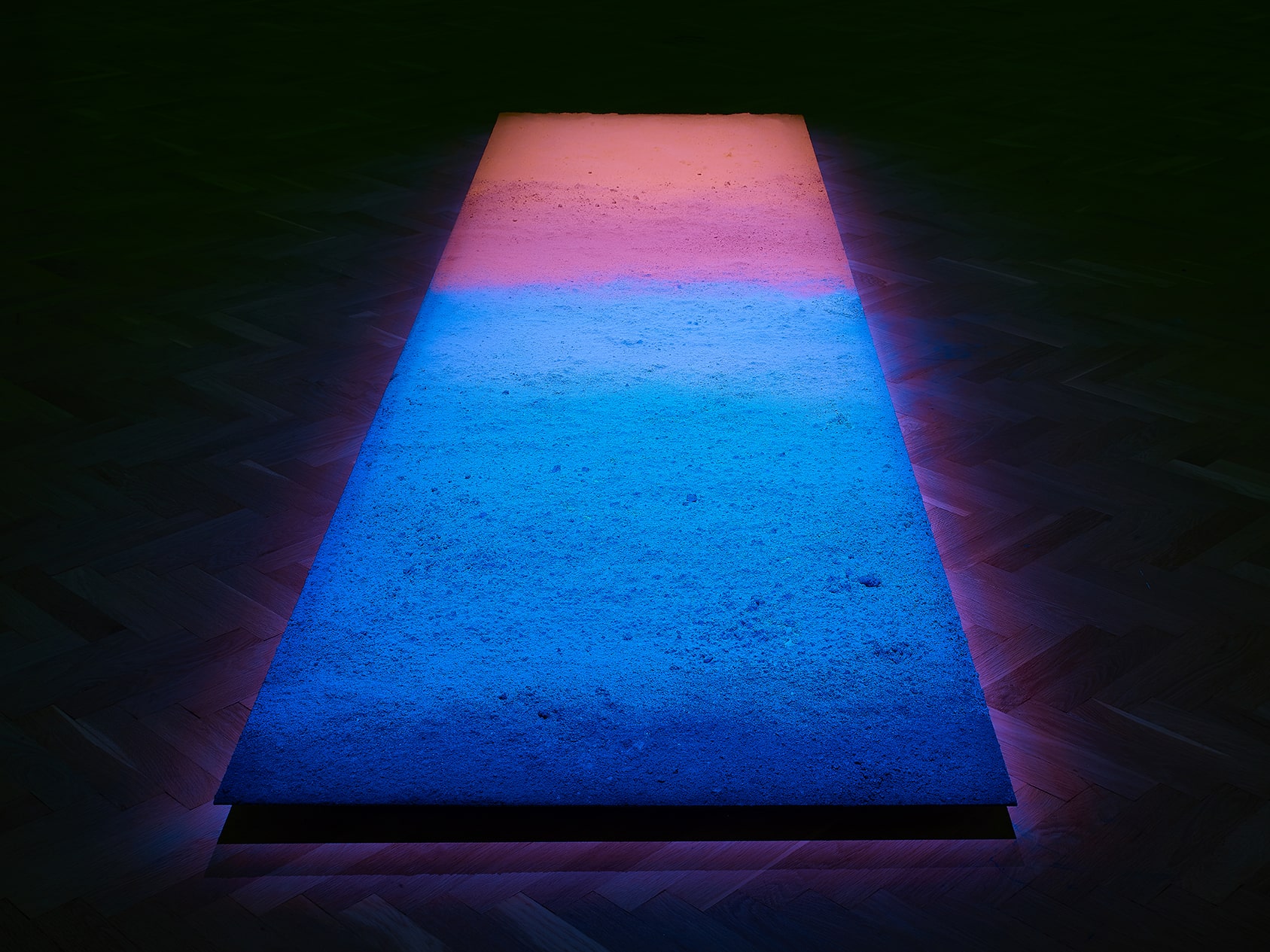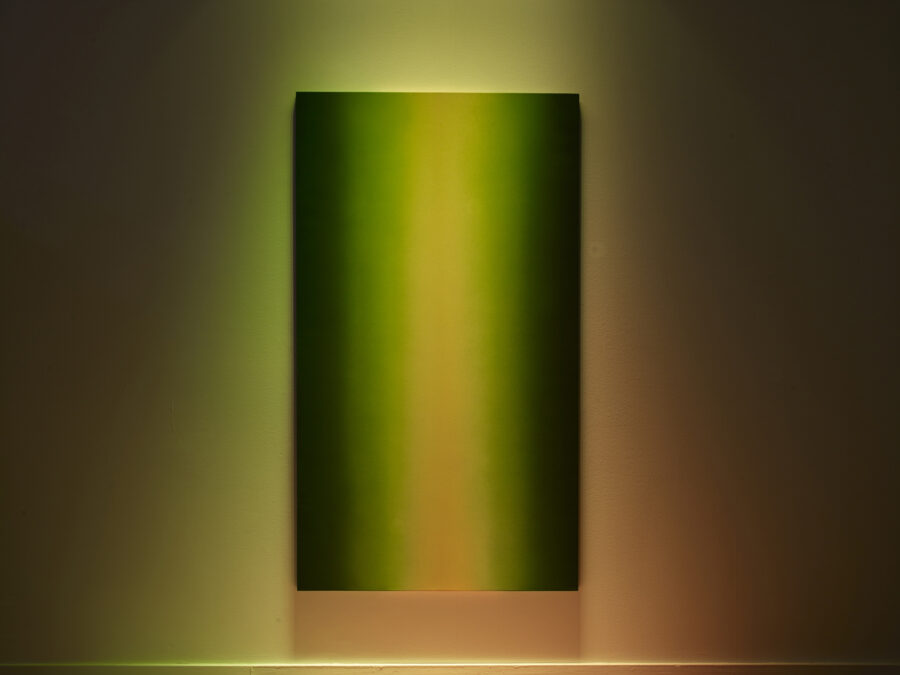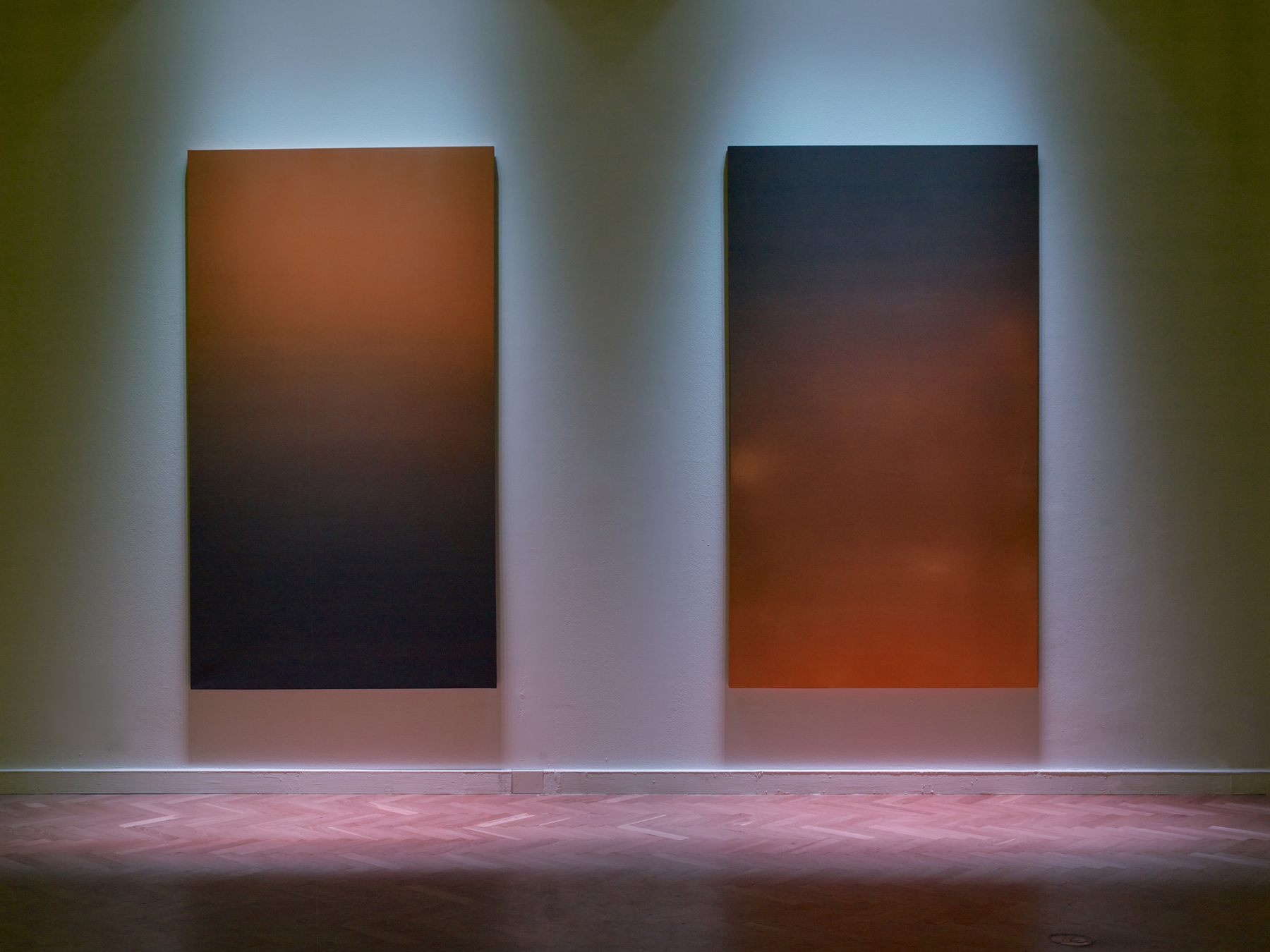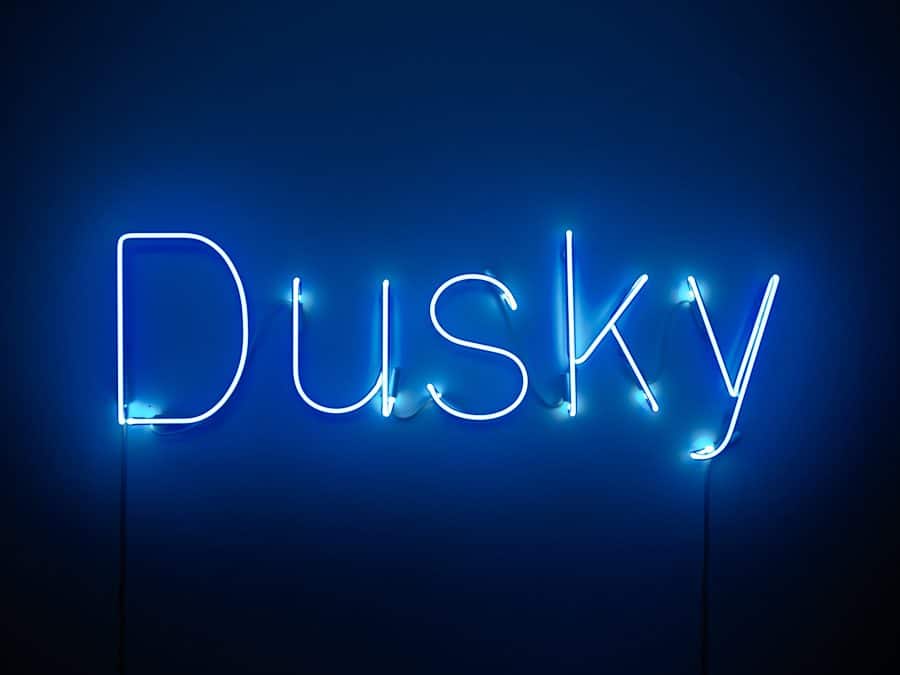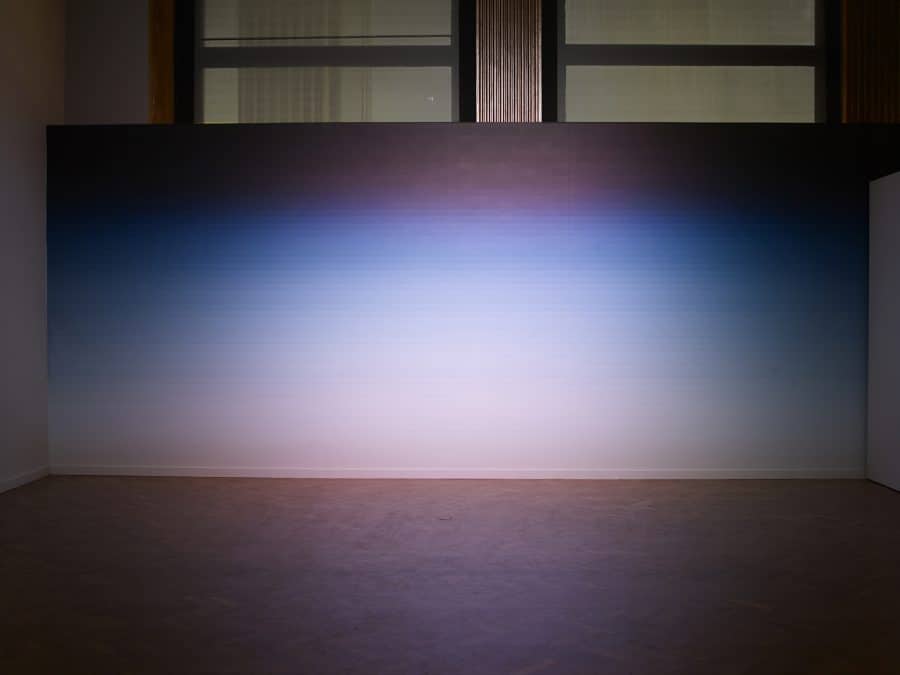Chicago Cultural Center, Exhibit Hall, October 8, 2022 – January 29, 2023
Exact Dutch Yellow presents abstracted, atmospheric sculptural light installations that refuse to offer a singular prescription for how to view them. To stand in front of, or rather within, these works is to experience the phenomenon of color both optically and physically but with an awareness that whatever you experience will be unique and ineffable.
A play on words and the act of naming, the exhibition title Exact Dutch Yellow references how subjective both the impression and classification of color was and remains. In Patrick Syme’s book, Werner’s Nomenclature of Colours, “Dutch Orange” is described by the crest of a gold-crest wren, the common marigold, and a streak of red orpiment, an arsenic sulfide mineral. When the noted English biologist Charles Darwin embarked on his now famous journey aboard the HMS Beagle between 1831-1826, he brought along Syme’s book and used it extensively. Darwin often used the exact phrasing to describe the creatures he encountered, for example a “French grey” octopus that changed shades from a “Hyacinth red” to a “Chesnut brown.” Darwin, however, occasionally ad-libbed, altering “Dutch Orange” to “Exact Dutch Yellow” when he published his Beagle Zoology Notes.
At the heart of the exhibition, underscored by its title, is the tacit acknowledgment that for all of its visibility, for all its presence, color—or at least how we name, classify, and experience it—remains subjective if not outright illusive.
- Curator
- Greg Lunceford
- Writer
- Marin R. Sullivan
- Exhibition Install
- NFA Space, Stephen Monkemeier
- Photography
- John Faier
- Generously supported by
- City of Chicago Department of Cultural Affairs and Special Events, Illinois Arts Council Agency
Exact Dutch Yellow, 2022
Neon, 4 x 40 in.
A play on words and the act of naming, Exact Dutch Yellow references how subjective both the impression and classification of color was and remains. In Patrick Syme’s book, Werner’s Nomenclature of Colours, “Dutch Orange” is described by the crest of a gold-crest wren, the common marigold, and a streak of red orpiment, an arsenic sulfide mineral. When the noted English biologist Charles Darwin (1809-1882), for example, embarked on his now famous journey aboard the HMS Beagle between 1831-1826, he brought along Syme’s book and used it extensively. Darwin often used the exact phrasing to describe the creatures he encountered, for example a “French grey” octopus that changed shades from a “Hyacinth red” to a “Chesnut brown.” Darwin, however, occasionally ad-libbed, altering “Dutch Orange” to “Exact Dutch Yellow” when he published his Beagle Zoology Notes. Realized here in two shades of neon, Darwin’s turn of phrase mixes colors to create an orange glow.
Portrait No. 2 Mauve to Gamboge, 2021
Fiberglass, aluminum, LED lights, paint, 51 x 51 x 18 ¾ in.
Portrait No. 1 Yellow to Blue, 2020
Fiberglass, aluminum, LED lights, paint, 51 x 51 x 18 ¾ in.
Interaction of Light, 2020
Set of two prints, Star 3 ply Xuan Paper with Canon image PROGRAF ink, 41 ½ x 57 1/4 in.
Landscape of Perception, 2022
Aluminum, pigment, and LED lighting, 3 ft x 12 ft
Using raw pigments, Landscape of Perception explores how color inclines towards one another. Composed of three hues, ochre, green, and ultramarine, this sculptural work is activated by LED lighting, which creates a cyclical visual flow between light and dark, and dramatically alters the optical understanding of color and perception.
Meadow, 2022
Canvas, paint, and LED lighting, 4 ft x 7 ft each
Meadow’s subtle ombre gradation evokes the experience of a landscape and is reminiscent of color field painting. As this painted meadow is illuminated, its various diffused colors come to life, allowing the work—and the viewer(s) who experience it—to explore the interplay on tones, especially those that live between the light and the dark.
The Sky at the Time was Berlin Blue, 2022
52 shades of blue, paint, 30 ft x 12 ft
The Sky at the Time was Berlin Blue transforms the gallery architecture into an inhabitable cyanometer. In 1789, the Swiss scientist and mountaineer Horace-Bénédict de Saussure (1740-1799) invented a device called a cyanometer (or cyanomètre). A simple tool made to measure the blueness of the sky, it is essentially a circle of paper with gradients of Prussian blue, also known as Berlin Blue, that move from white to black in fifty-two distinct degrees of color. Saussure, along with subsequent scientifically minded explorers like Alexander von Humboldt (1769-1859), used the device to demonstrate that the color of the sky grows darker with increases in elevation. Prussian Blue was the first modern synthetic pigment accidentally created by Johann Jacob Diesbach in Berlin around 1706.
Dusky Blue, 2022
Neon, 58 x 20 in
Robert Ridgway (1850 – 1929) was an American ornithologist and taxonomist, systematizing and developing descriptions of species that are still used today. In 1912 he published two books Color Standards and Color Nomenclature that systematized color names and included fifty-three colored printing plates articulating 1,115 individually named colors. Twenty – eight of these colors are described with “Dusky” ranging from “Dusky Blue” through “Dusky Purplish Gray” to “Dusky Yellowish Green.” The glow of Dusky Blue attempts to evoke a sensation of a color of the sky at dusk.
